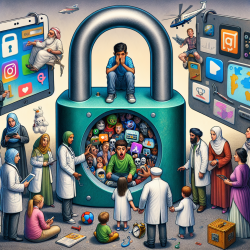Understanding Digital Addiction: A Growing Concern
In today's digital age, technology plays a crucial role in our daily lives. However, the rise of digital addiction, particularly among students, has become a significant concern. A recent study titled Prevalence and factors associated with digital addiction among students taking university entrance tests: a GIS-based study sheds light on this issue. The study reveals that 33.1% of students taking university entrance tests in Bangladesh are digitally addicted, with various factors contributing to this addiction.
Key Findings from the Study
The study, conducted among 2,157 students at Jahangirnagar University, Bangladesh, used a cross-sectional survey to gather data. The findings highlight several key factors associated with digital addiction:
- Student Status: Students attempting the test for a second time showed a higher likelihood of digital addiction.
- Mental Health: Depression was a significant predictor of digital addiction.
- Geographical Distribution: Digital addiction was more prevalent in specific districts, such as Manikganj and Chittagong Hill Tract areas.
Implications for Practitioners
As practitioners in speech-language pathology and online therapy, it's essential to understand the implications of digital addiction and how it can impact children's development. Here are some strategies to consider:
- Promote Digital Literacy: Educate students and parents about responsible digital device usage and the importance of balancing screen time with other activities.
- Address Mental Health: Incorporate mental health support in therapy sessions, focusing on managing depression and anxiety, which are linked to digital addiction.
- Collaborate with Educators: Work closely with schools to integrate digital wellness programs and support students in managing their digital habits.
Encouraging Further Research
The study highlights the need for further research to understand the complexities of digital addiction fully. Practitioners are encouraged to explore additional studies and collaborate with researchers to develop evidence-based interventions.
Conclusion
Digital addiction is a pressing issue that requires a collaborative approach from practitioners, educators, and parents. By understanding the factors contributing to digital addiction and implementing targeted interventions, we can create a healthier digital environment for students.
To read the original research paper, please follow this link: Prevalence and factors associated with digital addiction among students taking university entrance tests: a GIS-based study.










